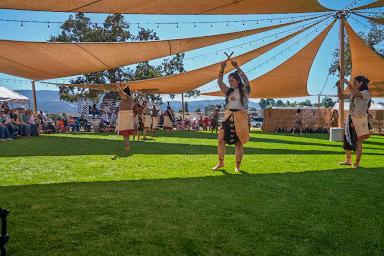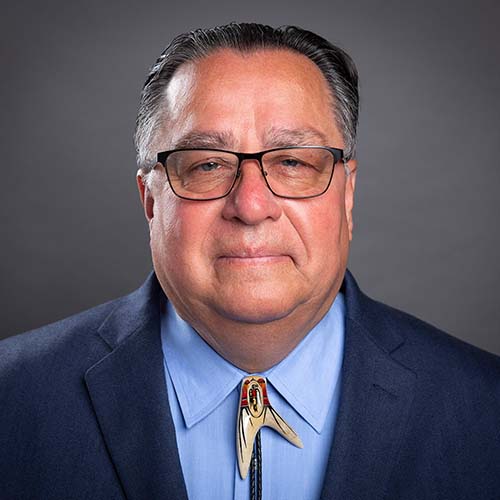
- Details
- By Native News Online Staff
The Santa Ynez Band of Chumash Indians will host California-style Native American singing, dancing, food, and games at the 19th annual Santa Ynez Chumash Culture Day, taking place from noon to 9 p.m. on Saturday, October 18, at the corner of Highway 246 and Meadowvale Road in Santa Ynez.
This free, family-friendly event is open to the public and welcomes attendees of all ages. In addition to cultural performances, there will be Native vendors, food booths, and basket-weaving demonstrations.
“Every year, we honor the original Native American people of California with our annual Santa Ynez Chumash Culture Day and invite tribes to share their languages, songs, dances, and stories,” said Nakia Zavalla, Cultural Director for the Santa Ynez Band of Chumash Indians. “This year, we celebrate our 19th annual event, with a theme focused on honoring our traditional dugout canoe and estuaries.”
The event will begin at noon with a Welcoming and Honoring ceremony, which includes an opening prayer and a tribute to families who have lost loved ones since last year’s gathering. California-style Native American singing and dancing will take place continuously from 12:30 to 9 p.m.
A traditional handgame tournament will begin at 6 p.m., with teams competing for cash prizes: $1,800 for first place, $1,300 for second, and $750 for third.
Santa Ynez Chumash Culture Day is sponsored by the tribe’s Elders Council and the Santa Ynez Band of Chumash Indians’ Culture Department. The Elders Council, a division of the tribal government, is responsible for preserving cultural resources and maintaining the tribe's heritage, history, and traditions. For more information, call Tribal Administration at 805-688-7997.
The Santa Ynez Indian Reservation, located in Santa Barbara County, was established and officially recognized by the federal government on December 27, 1901. Today, the Santa Ynez Band of Chumash Indians remains the only federally recognized Chumash tribe in the nation. The tribe is a self-governing sovereign nation governed by the laws set forth in its tribal constitution.
More Stories Like This
A Native American Heritage Month Playlist You Can Listen to All Year Long11 Native Actors You Should Know
Five Native American Films You Should Watch This Thanksgiving Weekend
Heavy metal is healing teens on the Blackfeet Nation
Over 150 Tribal Museums Participate in Fourth Annual Celebration of Native Life
Help us tell the stories that could save Native languages and food traditions
At a critical moment for Indian Country, Native News Online is embarking on our most ambitious reporting project yet: "Cultivating Culture," a three-year investigation into two forces shaping Native community survival—food sovereignty and language revitalization.
The devastating impact of COVID-19 accelerated the loss of Native elders and with them, irreplaceable cultural knowledge. Yet across tribal communities, innovative leaders are fighting back, reclaiming traditional food systems and breathing new life into Native languages. These aren't just cultural preservation efforts—they're powerful pathways to community health, healing, and resilience.
Our dedicated reporting team will spend three years documenting these stories through on-the-ground reporting in 18 tribal communities, producing over 200 in-depth stories, 18 podcast episodes, and multimedia content that amplifies Indigenous voices. We'll show policymakers, funders, and allies how cultural restoration directly impacts physical and mental wellness while celebrating successful models of sovereignty and self-determination.
This isn't corporate media parachuting into Indian Country for a quick story. This is sustained, relationship-based journalism by Native reporters who understand these communities. It's "Warrior Journalism"—fearless reporting that serves the 5.5 million readers who depend on us for news that mainstream media often ignores.
We need your help right now. While we've secured partial funding, we're still $450,000 short of our three-year budget. Our immediate goal is $25,000 this month to keep this critical work moving forward—funding reporter salaries, travel to remote communities, photography, and the deep reporting these stories deserve.
Every dollar directly supports Indigenous journalists telling Indigenous stories. Whether it's $5 or $50, your contribution ensures these vital narratives of resilience, innovation, and hope don't disappear into silence.
 The stakes couldn't be higher. Native languages are being lost at an alarming rate. Food insecurity plagues many tribal communities. But solutions are emerging, and these stories need to be told.
The stakes couldn't be higher. Native languages are being lost at an alarming rate. Food insecurity plagues many tribal communities. But solutions are emerging, and these stories need to be told.
Support independent Native journalism. Fund the stories that matter.
Levi Rickert (Potawatomi), Editor & Publisher

